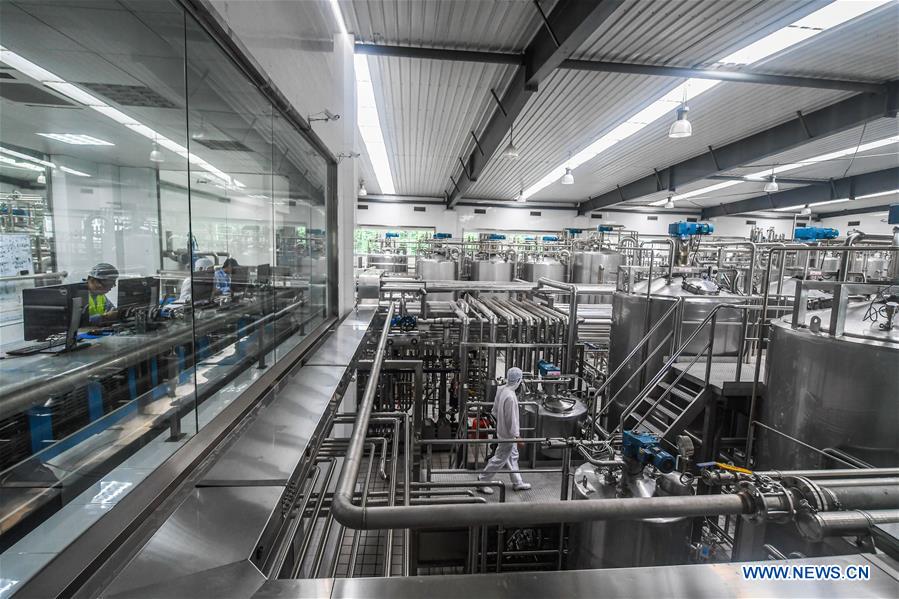Reform-minded China remains powerful engine of global economy
Doomsayers on China's economy have been wrong in the past, and they are wrong again today.
|
 |
|
A worker checks a production line of dairy products at a company in Pingyang County of Wenzhou City, east China's Zhejiang Province, June 22, 2017. China's gross domestic product expanded 6.9 percent year on year in the first half of the year to about 38.15 trillion yuan (5.62 trillion U.S. dollars), data from the National Bureau of Statistics (NBS) showed Monday. (Xinhua/Xu Yu) |
China reported 6.9 percent GDP growth for the first half of 2017, exceeding the 6.7 percent rise in 2016 as well as beating the consensus of forecasters.
Forecasters find it difficult to resist superimposing outcomes in major crisis-battered developed economies on China, but they overlook deeper issues shaping the China growth debate, said Stephen Roach, faculty member at Yale University.
The latest bout of pessimism over the Chinese economy has focused on the twin headwinds of deleveraging and a tightening of the property market.
As Roach has argued, China, with its far larger saving cushion and much smaller sovereign debt burden (49 percent of GDP), is in much better shape to avoid a sovereign debt crisis.
There is always good reason to worry about the Chinese property market, but unlike those of other fully urbanized major economies, China's housing market enjoys ample support from the demand side, he noted.
To stay tuned with the latest development of the Chinese economy, international financial heavyweights raised their prospects on the Chinese economy.
The IMF saw China's 2017 growth at 6.7 percent, 0.1 percentage points higher than its last estimate.
It shows IMF confidence in China's economic growth, considering solid first quarter underpinned by previous policy easing and supply-side reform, including efforts to reduce excess capacity in the industrial sector.
JPMorgan and Nomura Securities raised their annual growth forecast to 6.8 percent from 6.7 percent, while Citigroup and Standard Chartered Bank revised their 2017 projection for China upward by 0.2 percentage points to 6.8 percent.
The expanding consumption and services industries as well as increasing private investment in China will boost growth despite slowing investment in infrastructure and real estate in the second half of the year, on top of a financial deleveraging, said JPMorgan.
The Asian Development Bank (ADB) revised China's growth up to 6.7 percent this year and 6.4 percent next year, from 6.5 percent and 6.2 percent, respectively, in its latest Outlook supplement.
The ADB said increases in both domestic consumption and foreign trade helped promote China's economic outlook, which came as a result of a steady rise in both personal income and public spending.
Acknowledging China's slower economic growth with reformed structure under the new normal, these institutions showed less concern about the country's economic hard landing and financial risks compared to last year, and China is expected to continue stabilizing.
"What happens in China doesn't stay in China," said Maurice Obstfeld, IMF chief economist. "Strong Chinese growth drives growth particularly in Asia but also throughout the world."